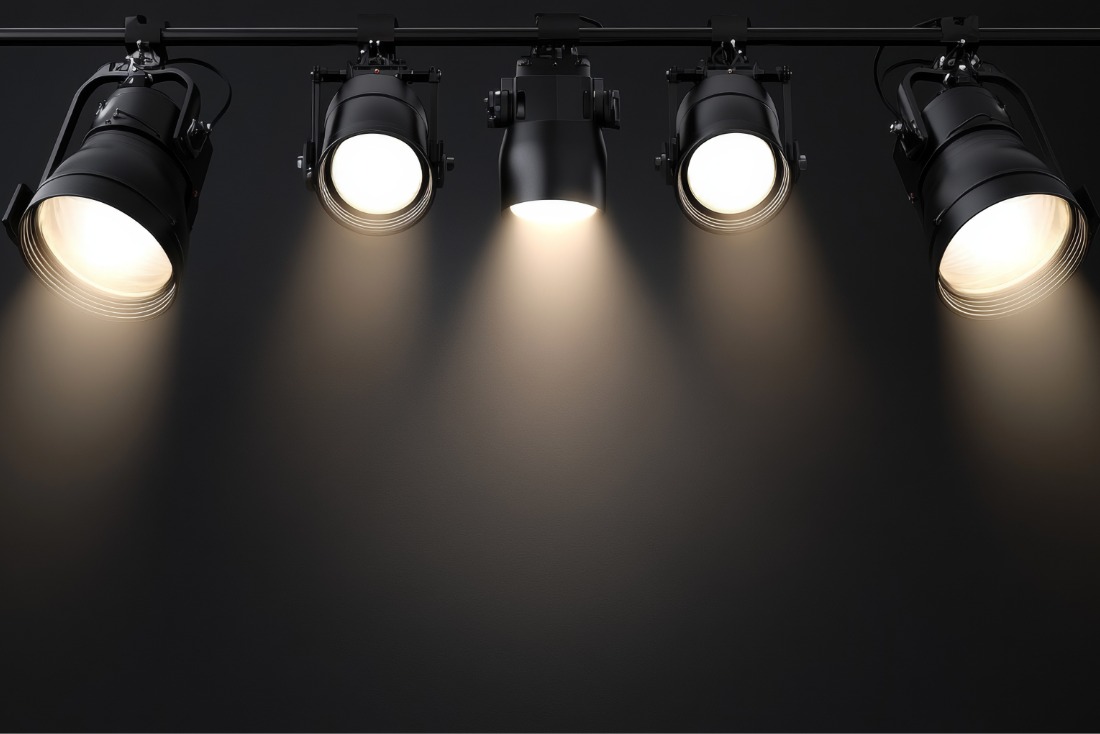Comparing Beam Angles in LED Fixtures

When shopping for LED spot lights, most people focus on brightness, color temperature, or wattage. But there’s another factor that has a big impact on how your space looks and functions—beam angle. The LED beam angle determines how wide or narrow the light spreads from the bulb or fixture. Choosing the wrong angle can leave a room feeling uneven, overlit, or shadowy, even if the bulb itself is powerful enough.
This post explains what beam angle means, why it matters, and how to choose the right angle for your specific lighting setup. Whether you’re installing new lights or replacing old ones, this guide will help you get it right the first time.
What Is Beam Angle, Exactly?
Beam angle refers to the width of light emitted from a bulb or fixture. A narrow beam angle (like 15° to 30°) focuses light on a tight spot—ideal for highlighting an object, like a painting or a retail display. A wide beam angle (like 90° to 120°) spreads light across a broader area, making it better for general room lighting.
Imagine shining a flashlight versus a floodlight. The flashlight is focused and intense—good for seeing one thing clearly. The floodlight spreads out over a large area—ideal for lighting up everything evenly. Beam angle in LED lighting works the same way.
Narrow Beam Angles: For Focused, Controlled Light
Narrow beam angles are typically used in spaces where you need to focus on a specific task or feature. These are often found in track lighting, accent lighting, or recessed spotlights. A 25° or 40° beam angle works well for art, signage, retail displays, or architectural details.
Using a narrow beam in the wrong setting, like a living room or hallway, can create dark spots or make the space feel uneven. But in the right place, it draws attention and creates drama—especially when paired with dimmable LED bulbs for more control.
Wide Beam Angles: For General Lighting
Wide beam angles, typically 90° or more, are ideal for general ambient lighting. They fill the room more evenly and are great for spaces like bedrooms, kitchens, hallways, or offices. Ceiling fixtures, LED panels, and downlights often use wide-angle LEDs to avoid shadows and eliminate dark corners.
If you’re replacing a traditional ceiling light and want consistent brightness throughout the room, look for LED fixtures with a beam angle between 100° and 120°. This ensures full coverage without harsh brightness in any one spot.
When Medium Beam Angles Make Sense
There’s also a middle ground—beam angles in the 40° to 60° range. These are a smart choice when you want both coverage and direction, like over a dining table or in a home office. Medium angles give you more control than a wide beam but don’t feel as concentrated as a spotlight.
They’re also useful in rooms with mixed functions, like open-concept spaces where you might want to light part of the room more directly without overpowering the rest.
Matching Beam Angles to Fixture Height
Another thing to keep in mind is fixture height. The higher your ceiling, the more spread you’ll get from the same beam angle. A 60° beam from an 8-foot ceiling covers less area than it would from a 12-foot ceiling. So if you’re lighting a tall hallway, warehouse, or retail space, you may need a narrower beam to get strong, focused light.
For typical residential ceilings (8 to 10 feet), a wider beam usually provides more balanced coverage. But in commercial settings with high ceilings, you’ll often see fixtures with 30°–60° beams to avoid wasted light.
What Happens If You Choose the Wrong Beam Angle?
Getting the beam angle wrong doesn’t mean your light won’t work—it just might not work well. If the angle is too narrow in a large room, you’ll get spotlighting and shadows. If the angle is too wide for a focused task, like over a kitchen island, the light might feel washed out and ineffective.
A lot of lighting complaints—like rooms feeling “too dim” or “too harsh”—aren’t about the bulb’s brightness. They’re about beam angle. That’s why picking the right one can make a huge difference in how a space looks and feels, even if you keep the same wattage and color temperature.
How to Choose the Right Beam Angle
If you’re lighting:
- A hallway or stairwell: Use a wider beam (100°–120°) for even coverage
- A kitchen island or workspace: Go with a medium beam (40°–60°) to focus light without being too harsh
- Artwork, displays, or plants: Use a narrow beam (25°–40°) to draw the eye and reduce spillover
- A large open room: Combine wide and medium beams using layered fixtures
It’s not always about picking one beam angle—it’s often about using multiple angles together to get the best result.
Need Help Picking the Right Light?
If you’re not sure which beam angle to choose, we’re happy to help. Contact us today our team can walk through your layout and recommend the best LED fixtures based on your space, ceiling height, and lighting goals. We’ll help you find the right LED beam angle so your lighting looks better and works harder—with no guesswork involved.